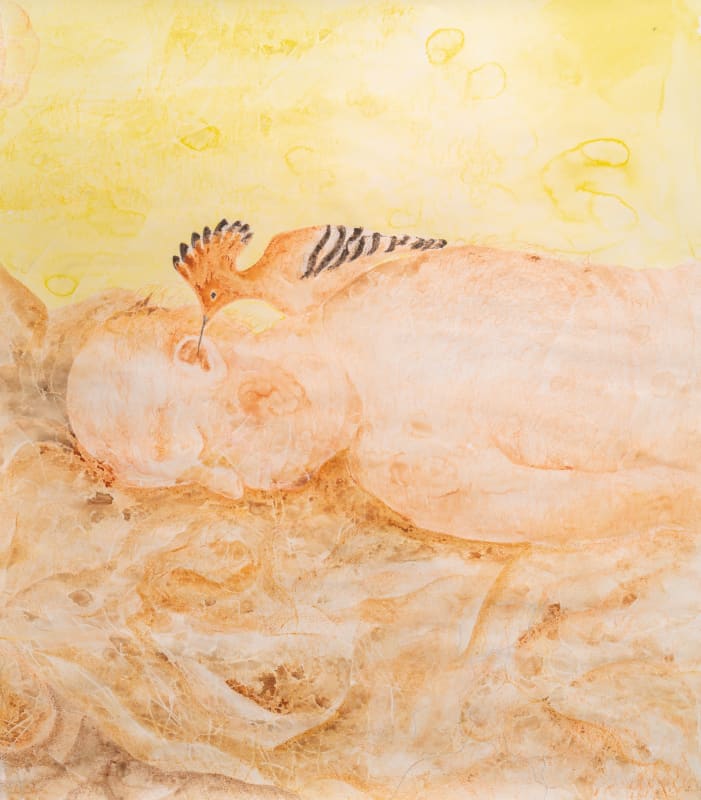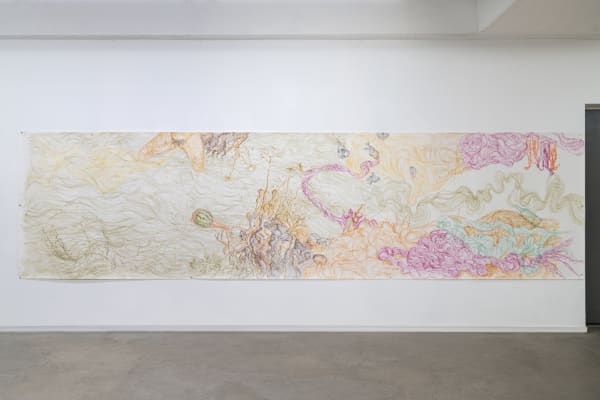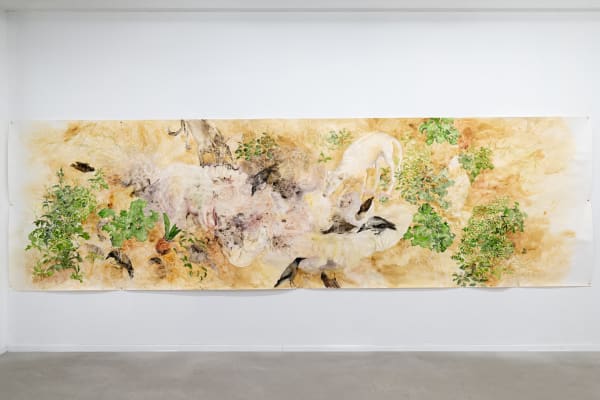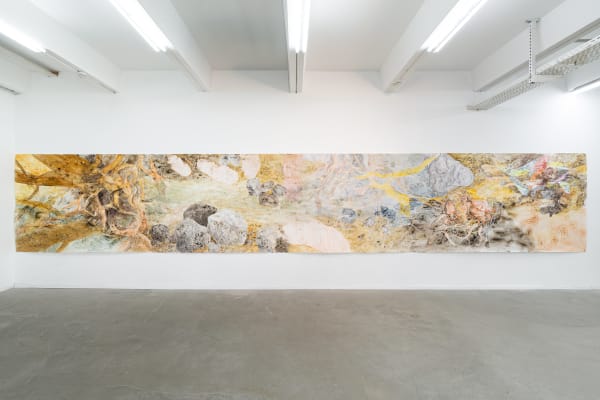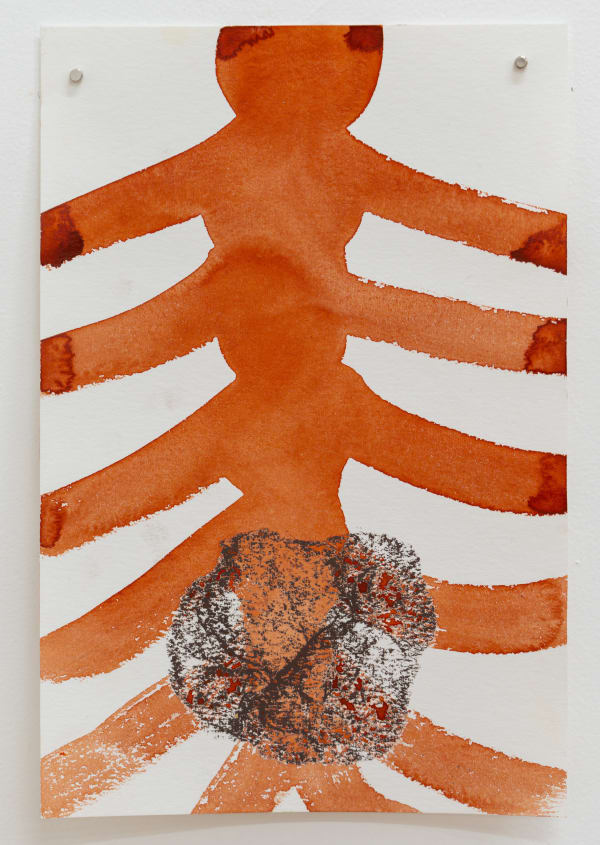In her solo exhibition Alma Itzhaky shows a new series of large-scale works on paper in a wide format - “scrolls” - alongside smaller drawings accompanying the work-process. The series was created with landscape and vegetation images in mind, focusing on the seam between the human environment and nature. It continues Itzhaky's interest in fallow fields and desolate areas as the "degree zero" of the landscape, a landscape which has no prominent or unique features but is all "dead space," an intermediate zone dotted with minor events. The works are created on the floor, kneeling on all fours and crawling across the paper, so the complete image is only revealed in hindsight. The large scale and changing directionality - up and down, vertical and horizontal, near and far - creates an image that must be taken in strides or read like a text, in connection to the Chinese and Japanese tradition of scroll paintings.
The world created in the scrolls similarly evokes a sense of a changing scale, of movement from the micro to the macro, from the inside of the body to the outside, from soaring to diving. The paintings are based on the metaphor of metabolism: materials changing state in the exchange between the body and its surroundings, between one body and another, between living and dead matter. The landscape and the body mix into a series of textures - dirt, skin, weeds, hair, scars, mud, and fluids - created by the repulsion between the oily pastel and liquid watercolors. From these textures, images emerge: animals feeding on a corpse, boars rummaging through trash, a woman urinating in a stream, pupae resting in the mud, and more. these images call to mind dissolving, fluid bodies, assimilating into a world where everything is alive and therefore everything also dies, decays and rot.
 Alma Itzhaky, Rummage, 2023
Alma Itzhaky, Rummage, 2023 Alma Itzhaky, The Hoopoe, 2023
Alma Itzhaky, The Hoopoe, 2023 Alma Itzhaky, Rags, 2023
Alma Itzhaky, Rags, 2023 Alma Itzhaky, Flowing, and Flown, 2023
Alma Itzhaky, Flowing, and Flown, 2023 Alma Itzhaky, Decomposition, 2023
Alma Itzhaky, Decomposition, 2023 Alma Itzhaky, Cocoons, 2023
Alma Itzhaky, Cocoons, 2023 Alma Itzhaky , Untitled, 2023
Alma Itzhaky , Untitled, 2023 Alma Itzhaky , Untitled, 2023
Alma Itzhaky , Untitled, 2023 Alma Itzhaky , Untitled, 2023
Alma Itzhaky , Untitled, 2023 Alma Itzhaky , Untitled, 2023
Alma Itzhaky , Untitled, 2023 Alma Itzhaky , Untitled, 2023
Alma Itzhaky , Untitled, 2023 Alma Itzhaky, Untitled, 2023
Alma Itzhaky, Untitled, 2023 Alma Itzhaky , Untitled, 2023
Alma Itzhaky , Untitled, 2023